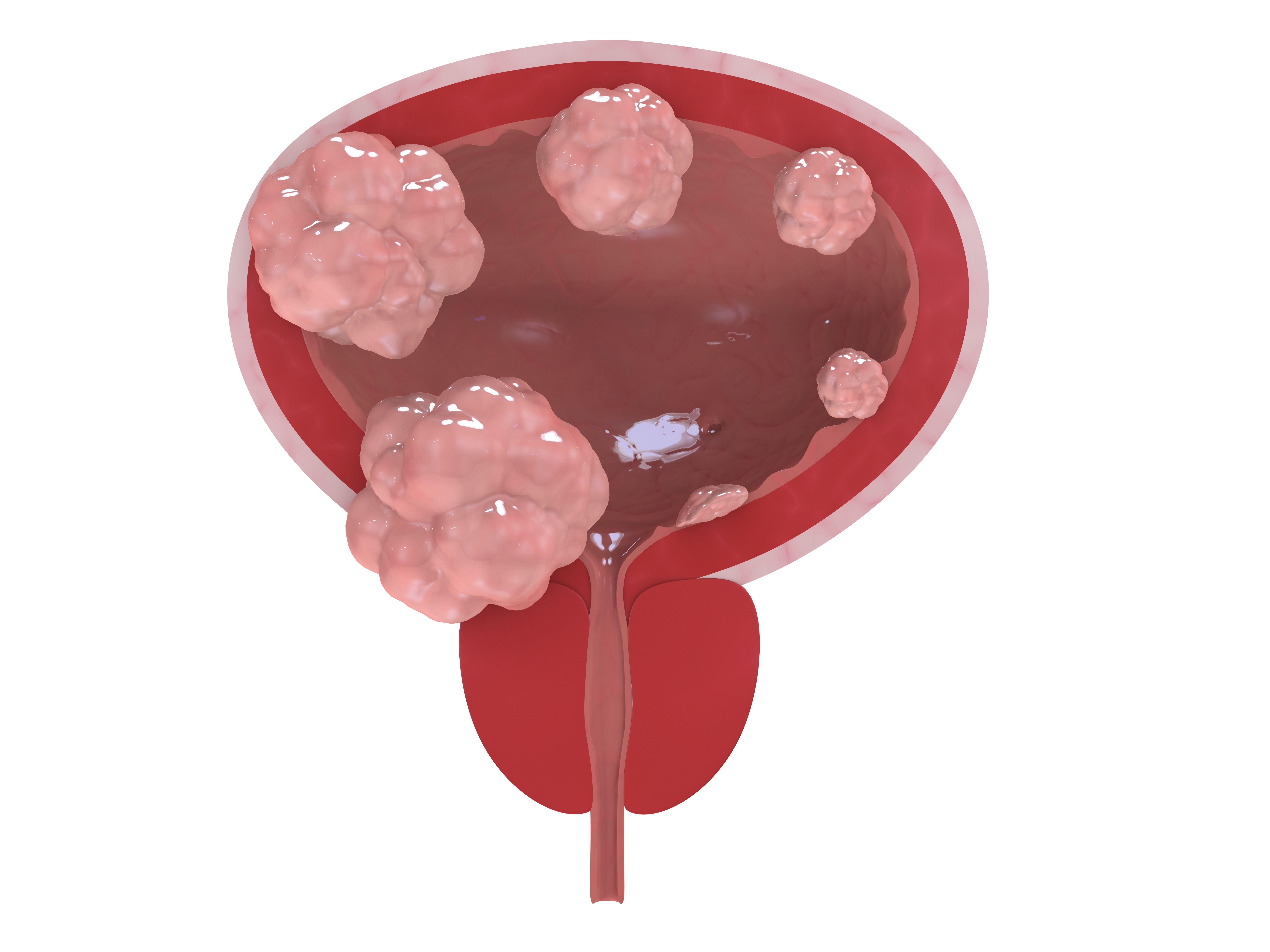Atezolizumab Did Not Improve EFS in Non–Muscle-Invasive Bladder Cancer
The safety profile of the atezolizumab with Bacillus Calmette-Guérin in NMIBC was consistent with that of each individual agent.
Grade 3 or higher TRAEs and serious TRAEs occurred in 22.7% of patients in the atezolizumab arm and 8.8% of patients in the BCG-only arm and 23.5% and 8.4% of patients, respectively.

Atezolizumab (Tecentriq) plus Bacillus Calmette-Guérin (BCG) induction and maintenance therapy did not significantly improve the primary end point of event-free survival (EFS) compared with BCG alone (HR, 0.98; 95% CI, 0.71–1.36; P =.9106) among patients with BCG-naive, high-risk non–muscle invasive bladder cancer (NMIBC), according to results from the phase 3 ALBAN trial (NCT03799835) presented at the 2025 European Society for Medical Oncology (ESMO) Congress.1,2
The findings, presented by Morgan Roupret, MD, PhD, professor of urology at Sorbonne University in Paris, France, and simultaneously published in the Annals of Oncology, reported 73 events of 262 patients in the experimental combination arm vs 72 of 255 patients in the single-agent BCG arm. Events were defined as high-grade or low-grade NMIBC relapse, persistence of carcinoma in situ (CIS) after 6 months, progression of disease, appearance of upper tract urothelial carcinoma, or death of any cause.
“You don’t have to be a statistician to see the [Kaplan-Meier] curves are very close to one another,” said Roupret during the presentation.
Regarding the secondary end point of high-grade recurrence-free survival (RFS), defined as reappearance of high-grade NMIBC or death of any cause, there was also no improvement in the experimental arm (HR, 1.06; 95% CI, 0.73–1.55; P =.7658). Data were not yet mature for an analysis of overall survival (OS), but there was no impact on the median survival with the addition of atezolizumab (HR, 1.73; 95% CI, 0.73–3.92; P =.1799).
What Were the Safety Findings in ALBAN?
Any-grade treatment-related adverse events (TRAEs) were reported in 94.1% (n = 240) and 75.6% (n = 189) of patients in the experimental and control arms, respectively. Grade ≥3 TRAEs and serious TRAEs occurred in 22.7% (n = 58) of patients in the atezolizumab arm and 8.8% (n = 22) of patients in the BCG-only arm and 23.5% (n = 60) and 8.4% (n = 21) of patients, respectively.
TRAEs leading to dose interruption were reported in 18.4% (n = 47) of patients in the experimental arm vs 7.6% (n = 9) in the control arm; TRAEs leading to withdrawal were reported in 28.6% (n = 73) and 8.8% (n = 22) of patients, respectively. In the experimental arm, 12.5% (n = 32) of patients withdrew from BCG only, 16.1% (n = 41) withdrew from atezolizumab only, and 3.1% (n = 8) withdrew from both.
“[Adverse events] that were depicted, rash and pruritus, were largely common and already depicted in the previous literature. There was no particular surprise,” Roupret said during the presentation.
What Was the Design of the ALBAN Study?
ALBAN enrolled 517 patients who were BCG-naïve with high-risk NMIBC after first- and second-look transurethral resection of bladder tumor (TURBT). High-risk was defined as the presence of any high-grade/grade 3 Ta or T1 tumors and/or CIS. Patients were also required to have no metastatic disease in the pelvis, abdomen, or chest and an ECOG performance status of 0 to 2.
Patients were randomized 1:1 to receive BCG once a week for 6 weeks during the induction phase and once a week for 3 weeks at 3, 6, and 12 months during the maintenance phase with or without atezolizumab, which was administered at 1200 mg intravenously every 3 weeks for up to 1 year.
The primary end point was EFS, and key secondary end points included high-grade RFS, progression-free survival, OS, duration of response, safety, and quality of life.
What Were the Patient Demographics?
Patient characteristics were balanced between the arms. The median age was 67.7 years (range, 36.0–88.0) in the combination arm vs 67.0 (range, 29.0–91.0) in the control arm. Male patients comprised 84.4% (n = 221) of the experimental arm and 86.7% (n = 221) of the control arm.
Roupret noted that the only potential discrepancy between arms was past history as a smoker. In the experimental arm, 66.0% (n = 173) of patients identified as a former smoker and 19.1% (n = 50) as a current smoker. In the control arm, these numbers were 61.8% (n = 157) and 15.0% (n = 38), respectively.
What Are the Next Steps?
In his conclusion, Roupret said that future research would focus on biomarker-driven patient selection based on integrated molecular and spatial immune profiling. He also noted a need for optimization of the timing, duration, and delivery route of checkpoint inhibitors in NMIBC.
Disclosures: Roupret declared a consulting or advisory role with Johnson & Johnson, Ipsen, BMS, Astellas, Accord Healthcare, AAA, Ferring, Oncodiag, Intuitive, Medtronics, MSD, Pfizer, AstraZeneca, Bayer, Photocure, Provepharm, Thermofisher, Vitadx, Recordati, Besins Healthcare, CG Oncology, Curium, and Roche Genentech.
References
- Roupret M. ALBAN: A phase 3, randomized, open-label, international study of intravenous (IV) atezolizumab and intravesical Bacillus Calmette-Guérin (BCG) vs BCG alone in BCG-naïve high-risk, non-muscle-invasive bladder cancer (NMIBC). Presented at: ESMO 2025 Congress; October 17–20, 2025; Berlin, Germany. Abstract LBA107.
- Roupret M, Bertaut A, Pignot G, et al. ALBAN (GETUG-AFU 27): A phase 3, randomized, open-label, international trial of intravenous atezolizumab and intravesical Bacillus Calmette-Guérin (BCG) versus BCG alone in BCG-naïve high-risk, non-muscle invasive bladder cancer (NMIBC). Ann Oncol. Published online ahead of print October 17, 2025. doi:10.106/j.annonc.2025.09.017